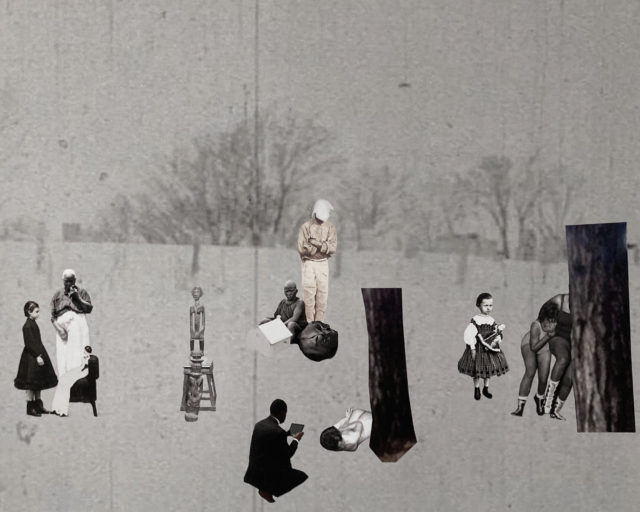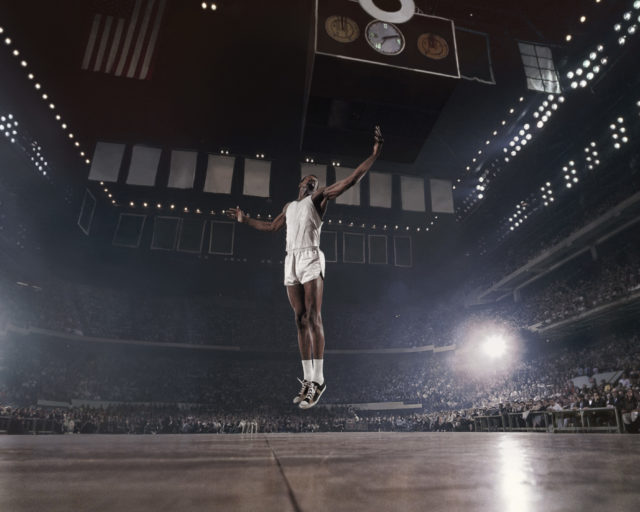Ocean of Images at MoMA
The Museum of Modern Art’s “New Photography” exhibition considers contemporary image-making in an increasingly globalized yet formless world.
DIS, Positive Ambiguity (beard, lectern, teleprompter, wind machine, confidence), 2015
Commissioned by The Museum of Modern Art
The Museum of Modern Art’s revamped, and now biannual New Photography exhibition is called Ocean of Images, which the curators Quentin Bajac, Roxana Marcoci, and Lucy Gallun explain is a title that clarifies the exhibition’s attempt to probe “the effects of an image-based post-Internet reality.” In this context, the Internet is to be understood as “a vortex of images, a site of piracy, and a system of networks,” and the show brings together nineteen international artists grouped around this central theme. Ocean of Images explores the extent to which their photographic practice reflects these rapidly changing techno-social norms.
The show opens with three works by the American collective DIS, known for their online publication DIS magazine. The first, Positive Ambiguity (beard, lectern, teleprompter, wind machine, confidence) (2015), is a sensuous video performance by pop artist and drag queen Conchita Wurst, who appears between two clear glass panes of a teleprompter, in the faux setting of an awards ceremony. The title signals the virtue of Wurst’s increasing popularity, and hints at the adaptability of people to new images and identities as something linked to the changing role of the screen.
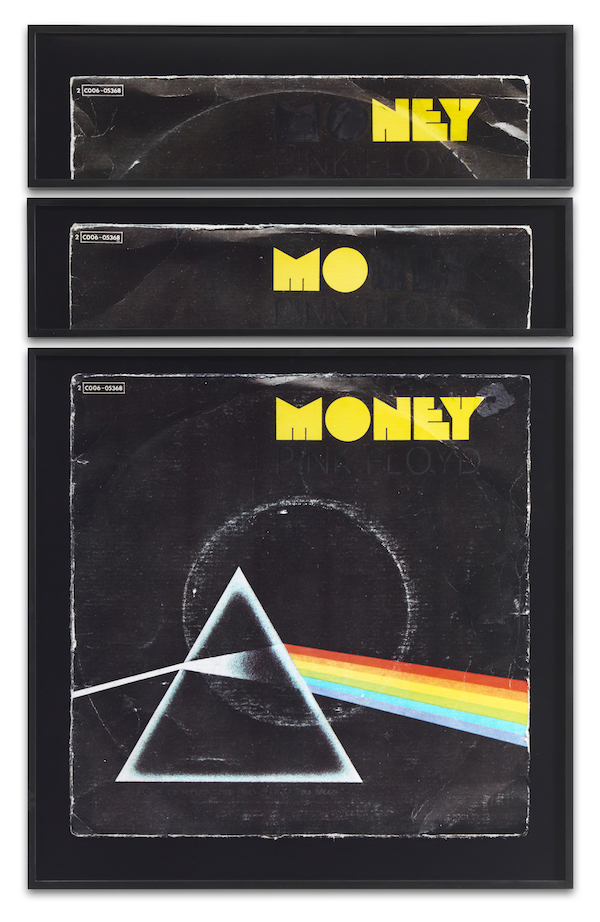
Themes of performance and fame are echoed in German artist Natalie Czech’s works, as in A Poem by Repetition by Aram Saroyan (2013), which folds together Saroyan’s sparse three-line poem with cropped and appropriated sections of the record cover for Pink Floyd’s Money from 1973. Czech’s works reflect the current retromania in popular (and artistic) culture, and methodically point to its strong links to a changing contemporary sense of identity. Czech’s taut formal control is echoed in Israeli artist Ilit Azoulay’s Shifting Degrees of Certainty (2014), which arrays a collection of eighty-four fragmented inkjet prints of curtains, doorways, statues, pre-historic animals, and a stuffed giraffe into the vague shape of a proto-gothic church façade. This piece reflects the associative bounties of image archives, by intimating disjunctive links between digital images floating in physical space.
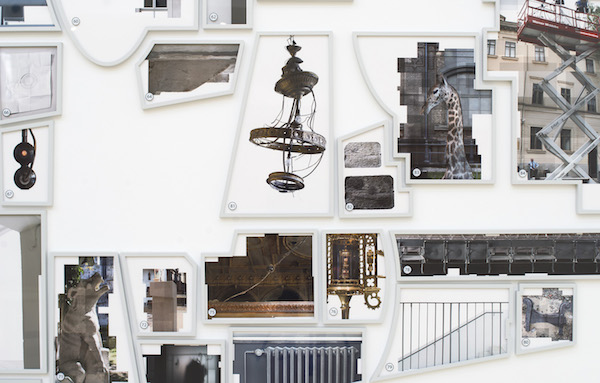
David Hartt’s Belvedere cycle (2013), Anouk Kruithof’s Subconscious Travelling (2013), and Indrė Šerpytytė’s 1944–1991, a series of re-photographed wood-carved models of Soviet-era torture houses (2009–15) also engage ideas of the archive. Šerpytytė’s row of bleak monochromatic prints is simultaneously ghostly and typological. Hartt’s photographs of rooms filled with stacks of photocopied documents, made in a free-market think-tank (The Mackinac Center for Public Policy), display the conjunction of bureaucratic order (a neutral, gray cubicle specifically for fiscal policy) and the callousness of lobbying (binders on “greed” and “freeloaders” recall Mitt Romney’s infamous remark on his “binders full of women”). Hartt’s pictures suggest a strange mixture of frat-boy humor and rigid bureaucracy in the functioning of American political power.

Other pieces invoke older modes of photographic imagery that continue to maintain their purchase on the present. Lele Saveri’s The Newstand (2013–14) transposes his ten-month occupation of a functioning newsstand, selling independent zines, artist books and records, from a subway stop in Brooklyn to the Steichen galleries of the MoMA. Its presence here underscores the ascendant interest in hand-made and limited edition printed matter within the circles of high art. The Newstand installation is open to customers during select hours, outside of which patrons are requested “not to touch the materials unattended.” This hauteur and reserve is a startling contrast to the openness of the original newsstand, and with its irreverent fare. That contrast is heightened by The Newstand’s proximity to Found Not Taken, Luanda (2013) by Edson Chagas, which features five pallets of free stacks of lithograph posters showing photographs of urban disjecta arranged into still lifes in interstitial parts of Luanda.
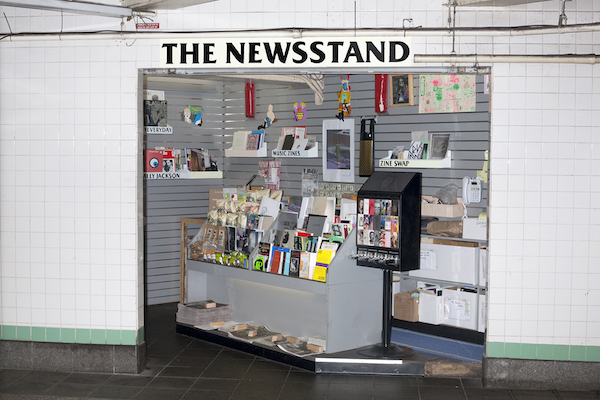
Nearby is David Horvitz’s Mood Disorder (2015). The work tracks the spread of Horvitz’s self-portrait, head in hands by a roiling sea, after he uploaded it to Wikimedia and it was adopted as a stock image to symbolize troubled mental health. This piece, ostensibly about motion and replication, instead becomes stilted in its installation as printed spreads hung on a gallery wall. Along with Positive Ambiguity, and Lucas Blalock’s overtly distorted and digitised studio pictures, this work appears in conceptual terms to be most germane to the exhibition’s stated premise of addressing photography’s relationship to “post-Internet reality.”
This raises the question of whether, and how soon, one might expect photographic art, or the slow speed of major museums’ exhibition schedules, to reflect a technological revolution that has only recently begun to transform every avenue of western public and private life. We might think of Warhol and Rauschenberg’s work from the 1960s as exemplary of art informed by the late adolescence of the television age, as in the case of Double Elvis (1963) or Retroactive I (1963), but public access to Facebook is not even a decade old. Web-driven life is still in its infancy.
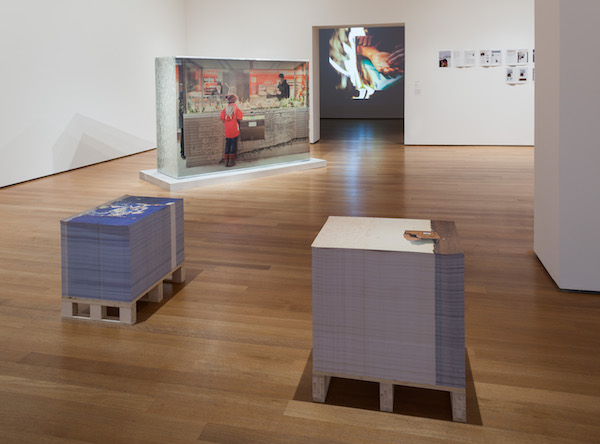
While its survey of photographic modes is commendably broad in geographic variety, Ocean of Images is a stately affair, and it generates little catalytic energy between its works at a visceral level. It lacks the dizzying hybridity of the “vortex” signalled in its own description, and the relative paucity of depicted human beings in the exhibited works evidences the show’s preferential interest in the life of images over life in images. This legitimates the presumption that we have all, in some fundamental sense, migrated to a world enclosed within the screen, suggesting that Ocean of Images is an exhibition that seeks to theorize the world rather than know it, to rework a line from John Szarkowski’s New Documents exhibition in 1967.
One wonders whether some structural change to the slow speed and expense of MoMA’s exhibition schedule isn’t a necessary precondition for responding to the velocity and complexity of life in the digital realm. Perhaps a more provisional and less comprehensive approach might deliver a more concise and emphatic exhibition. The danger of a thematic approach to a biannual survey built around the fact of rapidity may be that the mechanism itself is too slow.
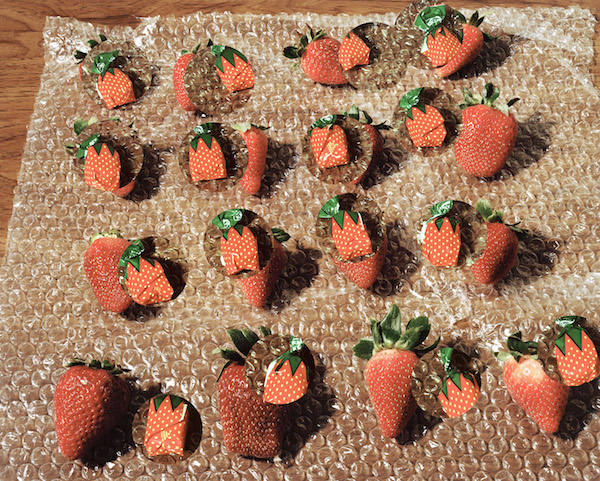
Ocean of Images: New Photography 2015 is on view at the Museum of Modern Art through March 20, 2016.










